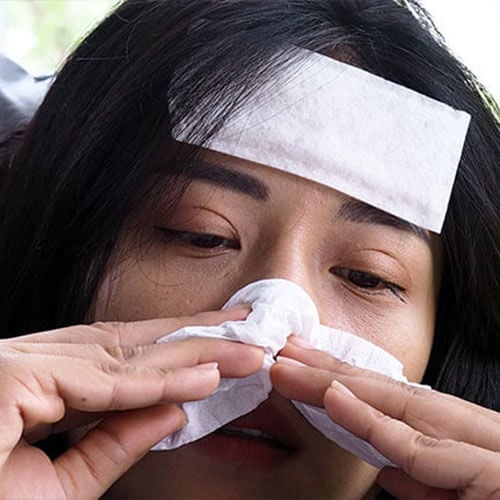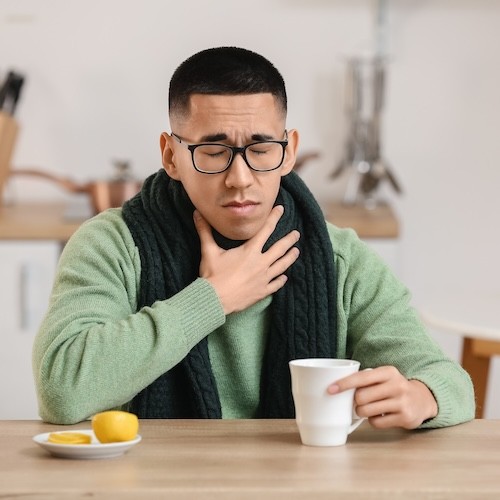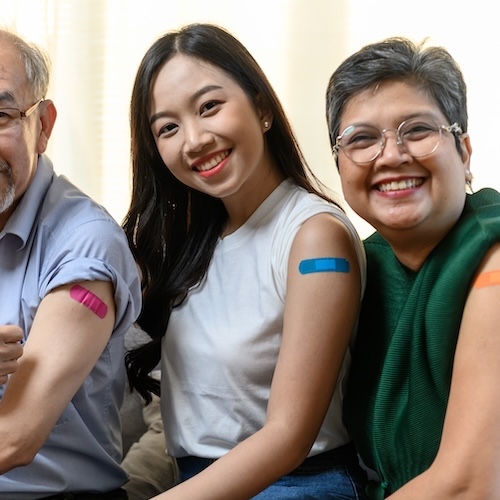It goes without saying that the pandemic greatly changed how a lot of us viewed fever and other flu-like symptoms. Before, most people thought of these symptoms as a consequence of not getting enough rest, exerting too much physical effort, and/or other factors in the environment.
With COVID-19, however, a lot of people tend to already expect (and prepare for) the worst. This is because some flu symptoms can be an indicator of COVID-19, causing panic and worry because of the need to do isolation.
Check out this quick read to know whether it is indeed COVID-19 or the common flu. Plus, learn how to address any of the symptoms you may be dealing with, whether you test positive or not.
How Are the Flu and COVID-19 Similar to Each Other?
COVID-19 and flu can present with similar symptoms. The U.S.’ Centers for Disease Control and Prevention (CDC) notes that both COVID-19 and flu can cause fever, chills, cough, breathing difficulties, fatigue, sore throat, muscle pain, runny or stuffy nose, headaches, vomiting, and/or diarrhea.
However, COVID-19 and flu don’t have the same incubation period, which is the length of time it takes for someone to experience symptoms after getting infected. If someone has COVID-19, symptoms can appear from 2 to 14 days after infection. On the other hand, if someone has the flu, it can take one to four days before symptoms manifest.
Is There a Way to Tell if your symptoms are due to COVID-19 or the Flu?
Unfortunately, there’s no way to determine if you have the flu or COVID-19 at first glance. If you or someone you know is worried that a fever and/or flu-like symptoms are signs of COVID-19, it’s best to begin home isolation so as not to spread the virus within your home or in your workplace. Call your doctor for advice on testing to confirm if you have COVID-19 infection. In doing home isolation make sure to stay in a room of your own with proper air ventilation with an adjacent bathroom. During this time, monitor symptoms too.
The Department of Health (DOH) recommends that you undergo an RT-PCR for COVID-19 as soon as symptoms develop after your exposure to a confirmed or probable COVID case. If you’re unsure if you were exposed to someone with COVID-19 but are dealing with symptoms, isolate right away and consider doing a test such as PCR or rapid antigen test as per advice of your doctor.
What Happens Next?
If you test positive for COVID-19, continue your isolation and follow the discharge and re-integration guidelines set by the DOH. The number of days you need to spend in isolation will depend on your vaccination status and the severity of your COVID-19 infection. Inform workplaces or schools as well about your current condition. Try to get enough sleep and rest, drink lots of water, and eat nutrient-rich, foods such as fruits and vegetables and get some sunlight if possible.
During this time, it is also recommended that you book a teleconsultation with a doctor so your symptoms can be monitored and be advised on proper medicines that you might need. Should your symptoms progress, such as feeling of difficulty in breathing, immediately seek emergency medical attention.
On the other hand, if you test negative but still have a fever and/or other flu-like symptoms, address these right away to prevent your condition from worsening.
Ask your doctor if you can take RiteMed Paramax™ (Ibuprofen + Paracetamol) or Paracetamol United Home® Fevertab. These medicines may help reduce your fevers and assist in relieving headaches, muscle aches, and other symptoms. Don’t forget to stay hydrated and ensure you get enough rest too.
If symptoms still persist despite taking any form of medicine, consult your doctor immediately.
References:
https://www.cdc.gov/flu/symptoms/flu-vs-covid19.htm
https://dph.illinois.gov/covid19/community-guidance/concerned-not-exposed.html








